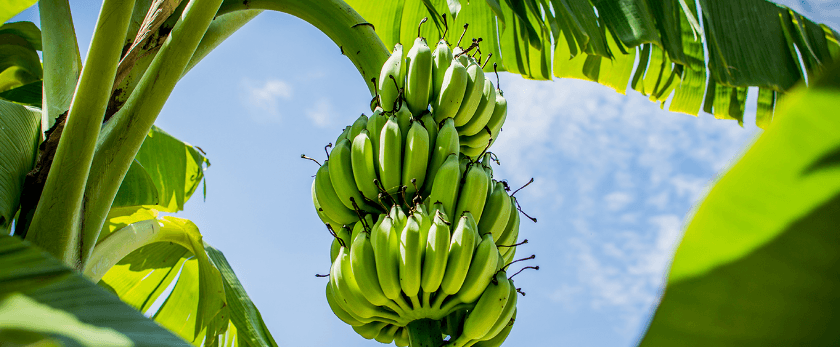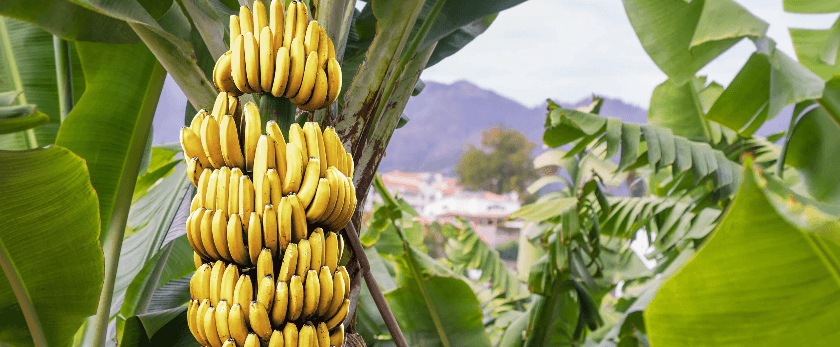Bananas are not only a delicious and nutritious fruit, but they are also surprisingly easy to grow in your own backyard. Not only does growing your own bananas save you money and provide you with fresh, organic produce, but it also helps reduce your carbon footprint by reducing the need for transportation and packaging. In this article, we will discuss the steps to successfully grow bananas in a sustainable and eco-friendly manner.
How to Care for Bananas
Watering
Bananas require consistent and adequate watering to thrive. They prefer moist, but not waterlogged, soil. It is important to water deeply and regularly, especially during the growing season. A good rule of thumb is to water once or twice a week, depending on the weather and soil conditions. Avoid overwatering, as this can lead to root rot and other diseases.
Light
Bananas are tropical plants and require plenty of sunlight to grow. They thrive in full sun, but can also tolerate partial shade. If you live in a cooler climate, it is best to plant your bananas in a spot that receives the most sunlight throughout the day. If you are growing bananas indoors, make sure to place them near a sunny window or use grow lights to provide them with enough light.
Soil
Bananas prefer well-draining, fertile soil with a pH level between 5.5 and 6.5. They also require a lot of nutrients, so it is important to amend the soil with compost or well-rotted manure before planting. This will provide the bananas with the necessary nutrients to grow and produce healthy fruit.
Fertilizer
Bananas are heavy feeders and require regular fertilization to thrive. It is best to use a balanced fertilizer with equal amounts of nitrogen, phosphorus, and potassium. You can also use organic fertilizers such as compost, manure, or seaweed extract. Fertilize your bananas every 2-3 months during the growing season, and reduce or stop fertilization during the winter months.
Pruning
Pruning is an important aspect of banana care, as it helps promote healthy growth and fruit production. It is best to remove any dead or damaged leaves, as well as any suckers (smaller shoots that grow from the base of the plant). This will allow the main plant to focus its energy on producing fruit. You can also remove any excess leaves to improve air circulation and prevent diseases.

What is the Best Time to Grow Bananas?
Bananas are tropical plants and require warm temperatures to grow. The best time to plant bananas is in the spring, after the last frost has passed. If you live in a cooler climate, you can also grow bananas in containers and bring them indoors during the winter months. Bananas take about 9-12 months to produce fruit, so it is important to plan accordingly and provide them with the necessary care and maintenance throughout the year.
Common Problems with Bananas
While bananas are relatively easy to grow, they can still face some common problems. Here are a few issues you may encounter and how to address them:
- Pests: Bananas can be susceptible to pests such as aphids, mealybugs, and spider mites. To prevent and control these pests, regularly inspect your plants and remove any affected leaves. You can also use organic insecticidal soap or neem oil to control the infestation.
- Diseases: Bananas can also be affected by diseases such as Panama disease and black sigatoka. To prevent these diseases, make sure to plant disease-resistant varieties and practice good sanitation by removing any dead or diseased leaves.
- Lack of fruit production: If your banana plant is not producing fruit, it could be due to a lack of nutrients or water. Make sure to fertilize and water your plant regularly, and provide it with enough sunlight. You can also try hand pollination by gently brushing the male flowers against the female flowers to encourage fruit production.
Conclusion
Growing bananas is not only a fun and rewarding experience, but it is also a great way to reduce your carbon footprint and live a more sustainable lifestyle. By following these tips and caring for your bananas in an eco-friendly manner, you can enjoy fresh, organic bananas right from your own backyard. So why not give it a try and start growing your own bananas today? Your taste buds and the planet will thank you.










